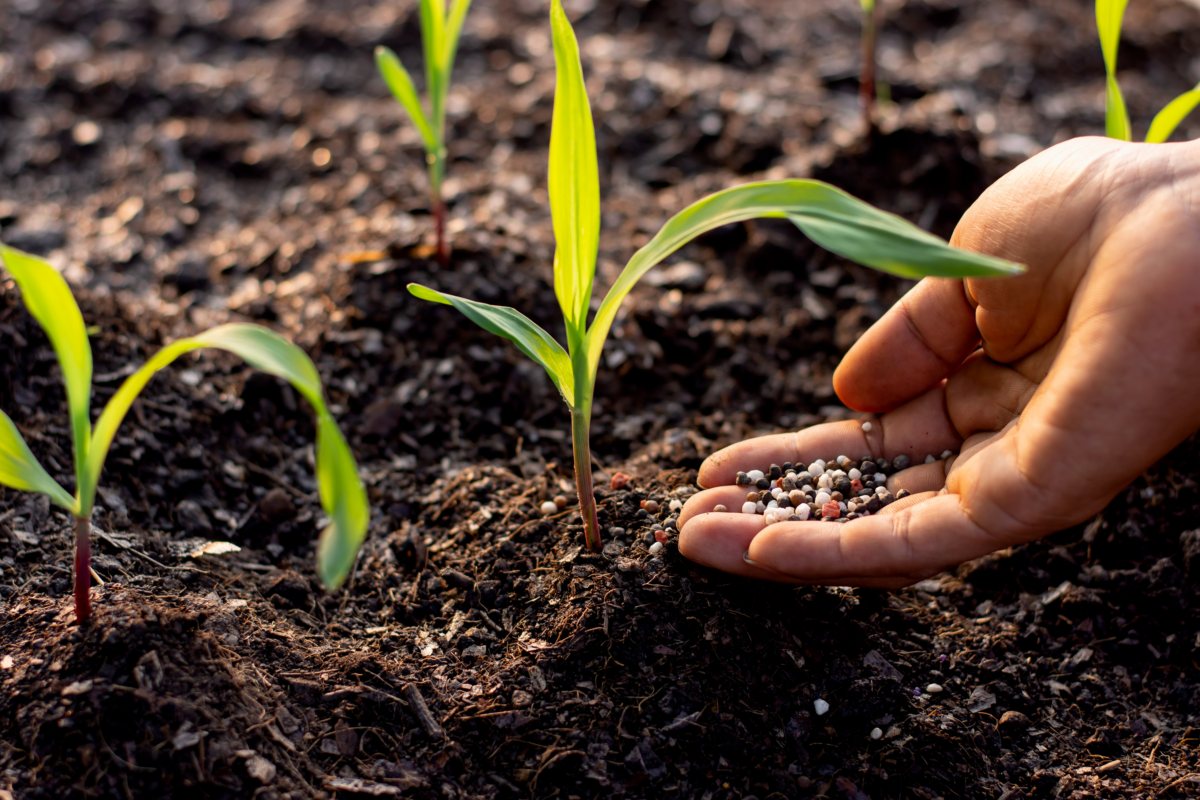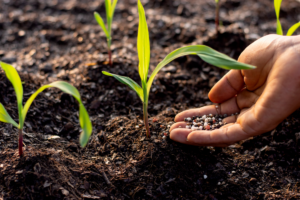
Jun 6, 2023
Nitrogen needs: Calculating nitrogen release a multifaceted process
It’s imperative that enough nitrogen be available during a crop’s peak uptake period. This generally begins three to four weeks after full-season crops are planted, and this period of rapid growth normally lasts for another three to four weeks.
Organic fertilizers release nitrogen more slowly than chemical fertilizers and that gives them an advantage when it comes to meeting crop needs during peak uptake.
“When you’re putting most of it down at planting, organic products tend to match that four- to eight-week window better than commercial fertilizer,” said Bruce Hoskins, assistant scientist in the University of Maine’s School of Food and Agriculture.

The University of Maine recently evaluated the nitrogen mineralization rates of a number of organic materials. The list included feather meal, soybean meal, fish meal, corn gluten meal and blood meal.
Mineralization is the process through which the nitrogen becomes available to the plant.
Many of the organic materials had nearly identical mineralization rates, and the rates really didn’t reach maximum until eight weeks after planting.
Studies at other universities have shown comparable results, but the overall mineralization rates in other states could be much higher because of warmer temperatures. The University of Maine work was conducted at a soil temperature of 60°. Mineralization rates increase with soil temperature by a factor of two or more with each 18° Fahrenheit increase in temperature.
The research also found that pelleted poultry manure and alfalfa meal had much slower mineralization rates than the other organic fertilizers. This is primarily because of the products’ higher carbon to nitrogen (C:N) ratios.
Materials with a C:N ratio below 10:1 release nitrogen relatively rapidly while those with ratios of more than 10:1 release nitrogen more slowly.
“Alfalfa meal or pelletized poultry manure release nitrogen much slower and at lower rates,” Hoskins said. This makes them poor materials for side dress applications.
Organic materials are low-analysis, and a split application with some of the nitrogen side dressed is often essential. Careful selection of a material for that second application is important, and that gets back to the C:N ratio.
Unfortunately, C:N ratios aren’t listed on the labels of organic fertilizers. However, the nitrogen analysis is on the label, and materials with more than 5% nitrogen should have a C:N ratio of less than 10:1.
“Most materials with 5% or higher nitrogen will have a faster release,” Hoskins said.
There are many variables.
Growers may have few choices of organic fertilizers available locally. Many growers use blended fertilizers that contain a variety of nitrogen sources — some that are rapid release and some that are not.
The window of peak crop uptake for shorter-season crops or transplants could begin a week or more sooner than for full-season vegetables.
Weather is always a factor.
“In cool, wet years, there’s slow mineralization and then higher rates of denitrification and leaching, as opposed to warm, dry years when there’s fast mineralization and the nitrogen doesn’t move,” Hoskins said.
Cover crops can be tremendous sources of nitrogen for organic growers and can sometimes fully meet the nitrogen needs of a following crop like sweet corn. But how much nitrogen is added can be a question that also relates to the C:N ratio.
Young, green, plant material is more likely to be 10 or less. The C:N ratio goes up as the plants mature. In a mixed-species cover crop, the C:N ratio will vary widely.
A legume is best at fixing nitrogen, but a legume is usually combined with a cereal grain. Mature wheat straw could have a C:N ration of 50:1 but will break down and tie up nitrogen faster when tilled and incorporated than when left on the surface.
“It’s not only C:N ratio and nitrogen content; it’s also how fast the plant material will break down,” Hoskins said. “It’s really difficult to accurately predict the nitrogen benefit of a cover crop.”
Organic fertilizer and cover crop calculators from Oregon State University are tools often quoted in the industry to help with these decisions. They are available at extension. oregonstate.edu/organic-fertilizer-cover-crop-calculators.
Compost works well if you need organic matter, but a lot of the nitrogen has become less available during composting.
“We don’t recommend it as a fertilizer — especially not a nitrogen fertilizer,” Hoskins said.
Manure can be a good, organic material, but the C:N ratio will depend on how much bedding was used. The more bedding, the slower the nitrogen release.
The U.S. Department of Agriculture’s National Organic Program (NOP) guidelines specify hold-out times when uncomposted manure has been applied. You can’t harvest for 90 days after planting for aboveground crops and 120 days after planting for root crops.
A good nitrogen plan for organic vegetables could be to start by estimating the nitrogen contributions from organic matter breakdown, then estimating how much nitrogen is coming from cover crops.
The next step would be to look at a product like pelleted poultry manure applied at planting to provide some long-term release, and then hold some fast release material in reserve for side dressing.
“Most growers estimate how much nitrogen will be available, watch the crop, and then side dress accordingly,” Hoskins said.
A pre-side dress nitrogen test can help make side dress decisions, even though the sample has to be sent to a lab and there’s at least a one-week lag time. There are field testing meters for nitrate, but they can be quite expensive.
A pre-side dress nitrogen test should be taken about three weeks into the crop cycle, between Memorial Day and Independence Day in the Northeast and earlier in southern states.
“It will accurately determine how much nitrogen has been mineralized to that point in the year, and then you can make adjustments if needed,” Hoskins said.






